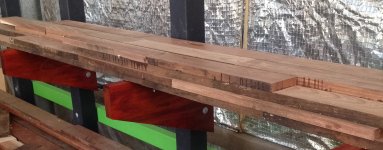Rip Van Winkle
Member
- Joined
- Nov 26, 2014
- Messages
- 301
I don't know if anybody else saw this story.
http://www.dailymail.co.uk/news/art...ees-seriously-ill-including-office-nurse.html
https://www.google.com/amp/gizmodo....ter-million-doll-1789601423/amp?client=safari
http://www.politico.com/states/flor...re-that-hospitalized-fbi-miami-workers-107768
"$750K sculpture sickened FBI workers in Miami"
"15,000lb cedar sculpture at the FBI makes more than a dozen employees seriously ill including the office nurse"
"An enormous sculpture in the FBI's Miami field office is being blamed for sickening a number of the bureau's workers including the office nurse who had an extreme allergic reaction."
"Made of Western red cedar imported from Vancouver, the massive artwork was actually 30 individual wooden pieces built to resemble a tornado. It was designed by Ursula von Rydingsvard, an artist known for making sculptures from wood beams."
http://www.dailymail.co.uk/news/art...ees-seriously-ill-including-office-nurse.html
https://www.google.com/amp/gizmodo....ter-million-doll-1789601423/amp?client=safari
http://www.politico.com/states/flor...re-that-hospitalized-fbi-miami-workers-107768
"$750K sculpture sickened FBI workers in Miami"
"15,000lb cedar sculpture at the FBI makes more than a dozen employees seriously ill including the office nurse"
"An enormous sculpture in the FBI's Miami field office is being blamed for sickening a number of the bureau's workers including the office nurse who had an extreme allergic reaction."
"Made of Western red cedar imported from Vancouver, the massive artwork was actually 30 individual wooden pieces built to resemble a tornado. It was designed by Ursula von Rydingsvard, an artist known for making sculptures from wood beams."

